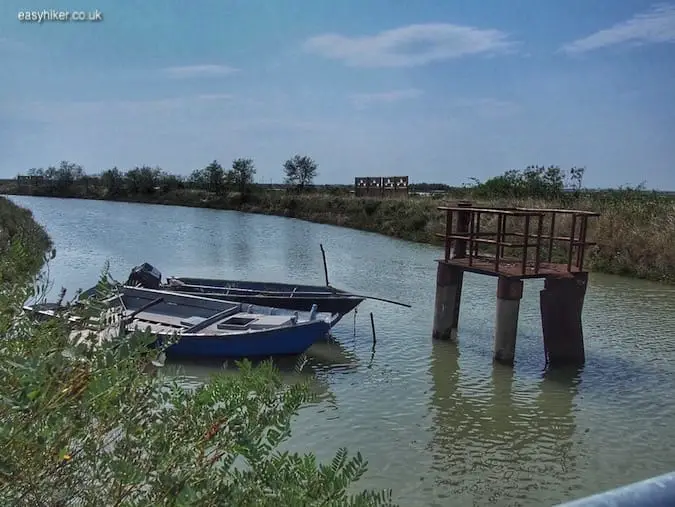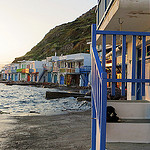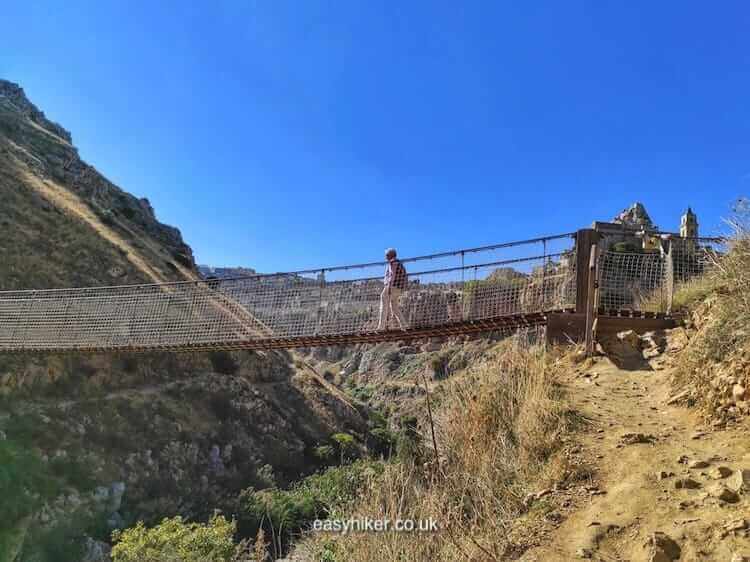The Alps are surrounded by large and fascinating cities (such as Turin, Salzburg, Munich) but have themselves little interesting architecture or history to offer. Human settlements in Europe’s highest mountain range have always tended to be small, and most were farming villages until recently – when they became skiing resorts.
Either way, there is usually not much to look at, and precious little variety on show. The most stunning exception to this rule-of-thumb is Aosta in northern Italy, where not only the mountains are looking down on you (plus the occasional flower pot) …

… but also the small matter of 2000 years of history.
This is Aosta – Little Rome of the Alps

Aosta was established in antiquity as one of the few Roman settlements in the Alps, the administrative and military capital of their Alpes Graiae province. Ever since, it has been nicknamed “The Little Rome of the Alps”, but how important a cog was the town in the wheel of the Empire?
One good indication for such questions is always the type and the size of the local theatre. Aosta’s Teatro Romano is currently closed for major renovation works, so we could not have a look for ourselves, but its facade – all 22 metres of it – is certainly an impressive sight.

The Teatro Romano was a “proper” amphitheatre (staging races and gladiator fights), not just a “theatre” for plays and recitals, and could seat 4000 spectators, a good size for a provincial Roman town. It belonged to a larger complex that also included baths and a temple.
Having said that, the military always outweighed the administrative in Roman Aosta, which was more of a stronghold than a settlement. Most of its antique remains speak of defense, not of the “sweet life” or cultural sophistication.
Above all, there is the well-preserved town wall, originally fortified with 20 towers. This wall originally enclosed a rectangle of 720 x 570 metres, which means that there would have been roughly one tower every 125 metres or so.
Roman Aosta must have looked pretty scary from the outside – which was, one suspects, its very purpose.

We start our walk around town at one of Aoasta’s landmark remains, the Porta Praetoria. This was originally the town’s main entrance gate, but it stands in the dead centre of the centro storico today.
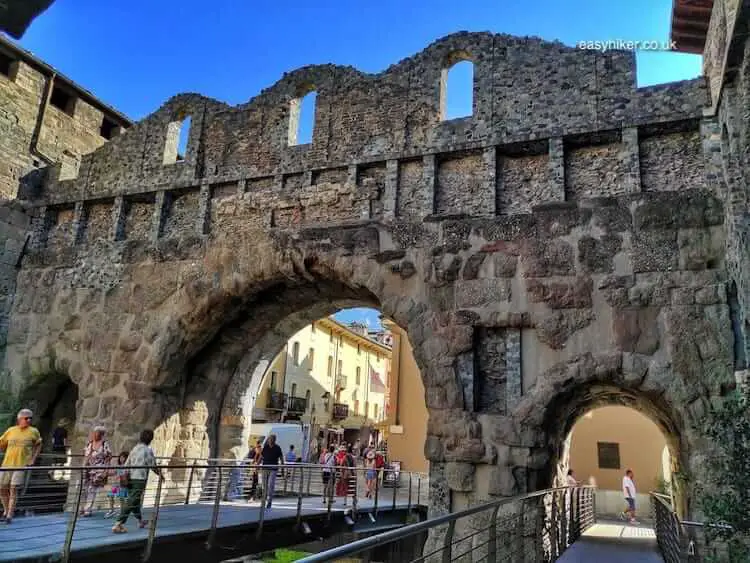
Walk into Via Porta Praetoria in the direction of the City Hall. (The Teatro Romano stands behind the block of buildings on your right. To get a good view, try Via Baillage next to the Porta or Via Charrey opposite City Hall.)
On the far side of the City Hall square, called Piazza Chanoux (French names are everywhere in Aosta: the province is one of two officially bilingual areas in Italy, the other being South Tyrol), turn right into the Via Hotel des Etats towards the Cathedral. This was were the Romans built their administrative town centre, which is today buried by newer buildings.
Parts of this ancient forum have been exposed while other parts (the Criptoportico Forense walkway) were reconstructed underground.
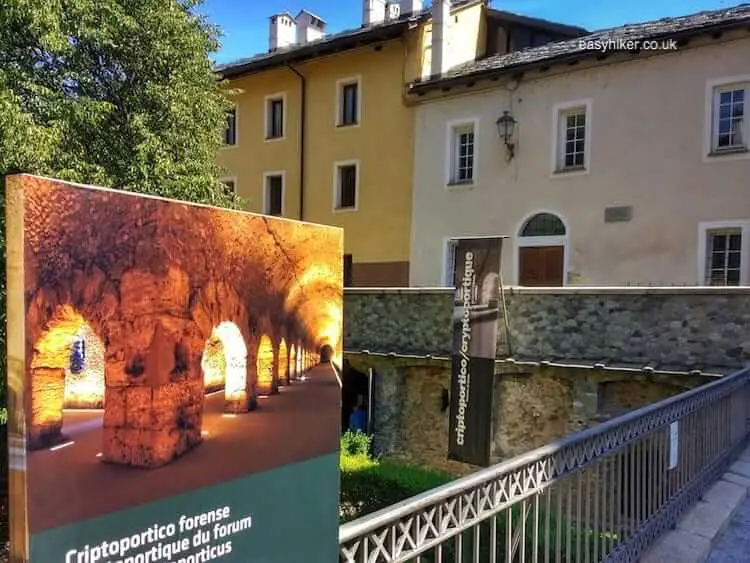
Walk into Via Malherbes (right next to the Cathedral), and, where this street ends, continue left into Via Marche. Cross Via Aubert straight into Via Torre del Lebbroso to find Aosta’s spookiest and most storied building: the Leper’s Tower.
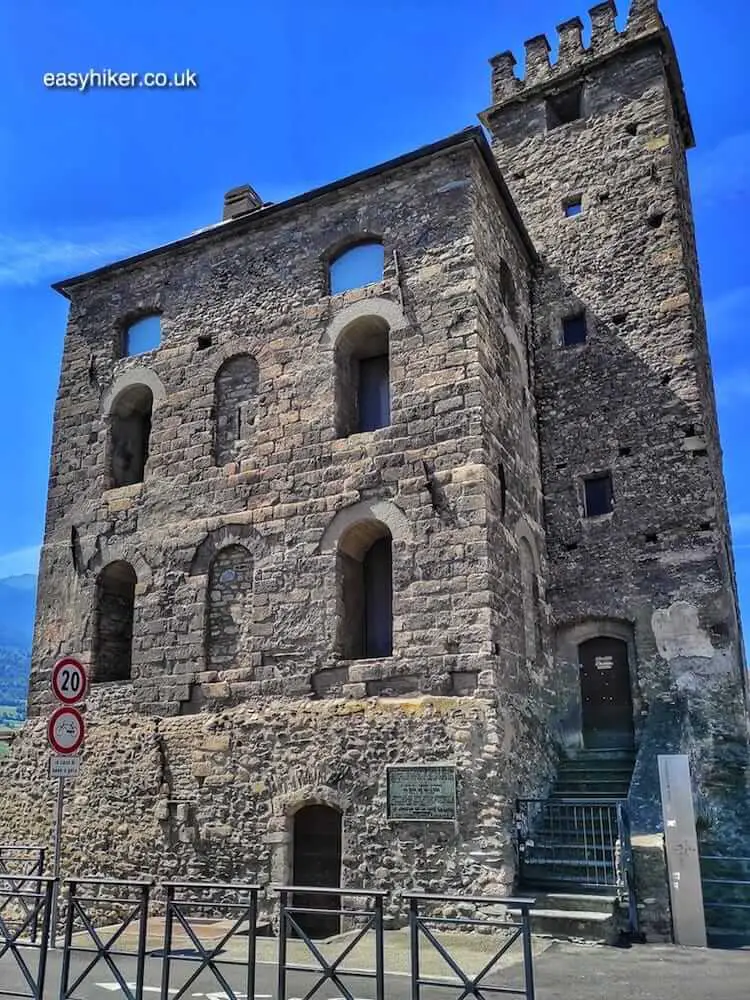
This tower accommodated a lepers’ colony for much of the late 1700s. The extended Guasco family, immigrants from the Italian Riviera, arrived in Aosta around 1770 and, after it was discovered that all of them suffered from leprosy, were sequestered and virtually imprisoned in the tower that belonged at the time to a charity hospice run by a Catholic order.
That is the spooky bit. Storied the tower became through Xavier de Maistre, the scion of an aristocratic and staunchly royalist family who had sought refuge across the Italian border in post-revolutionary France. De Maistre stayed in Aosta for five years, studying at the local university but mainly learning how to paint and becoming a well-respected landscape artist.
On his walks through the town, he also met and befriended Pierre-Bernard Guasco, the last surviving inmate of the lepers’ tower. 20 years later, de Maistre based a noveletta on their conversations, called The Leper of Aosta, which tells the story of a man who can still find beauty in an ill-fated life and joy in the views of the Alpine landscape.
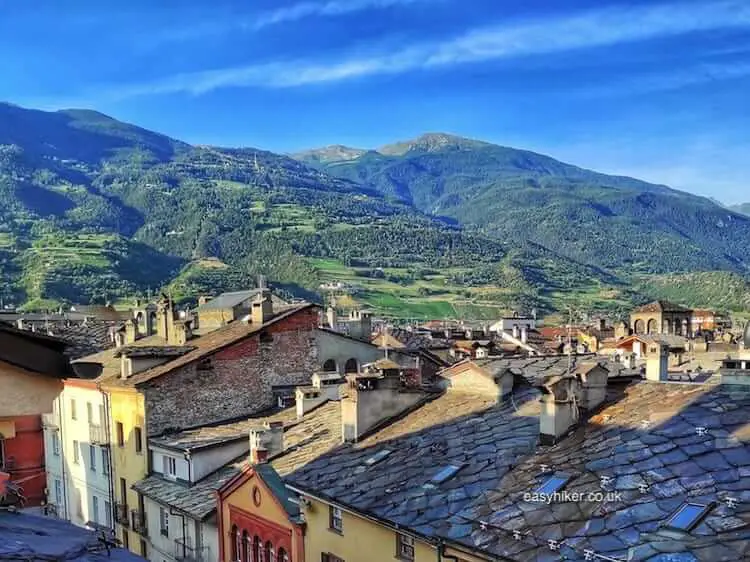
(This is not poor de Guasco’s view from his tower but ours from our holiday flat. But you get the drift.) Behind the tower, turn left into Via Festaz, left again into Via Xavier de Maistre (passing City Hall again), and then right into Via Amfiteatro.
Walk past the mother church of the Congregazione delle Suore di San Giuseppe, a once powerful order of nuns …
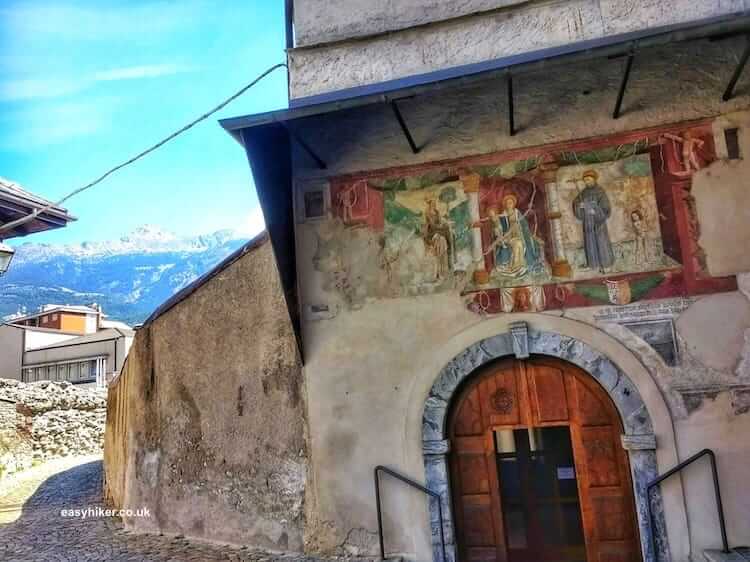
… into Via Guido Rey.
Turn right into Via Sant’Orso for the St Orso monastery, which was established more than one thousand years ago. Not much of the original building fabric is left, but the bell tower – which stands apart from the church – dates back to the 12th century. Its lower part, that is, but the upper part was added not more than 100 years after that. Even the clock was already in place in 1642, as contemporary documents show.
In its brutalist simplicity, the bell tower may look almost modern, but in fact, it is that rarest of architectural things: a structure that has stood practically unchanged for nearly 500 years.

Stroll around the compound a little, and take a look at the monastery’s cemetery and another church opposite. This seemingly non-descript church has been overlooked for long, but its foundations were recently found to date back to late antiquity. On the square opposite the bell tower, you can also find a handsome residential building that was constructed for the monastery’s top brass in the 16th century.
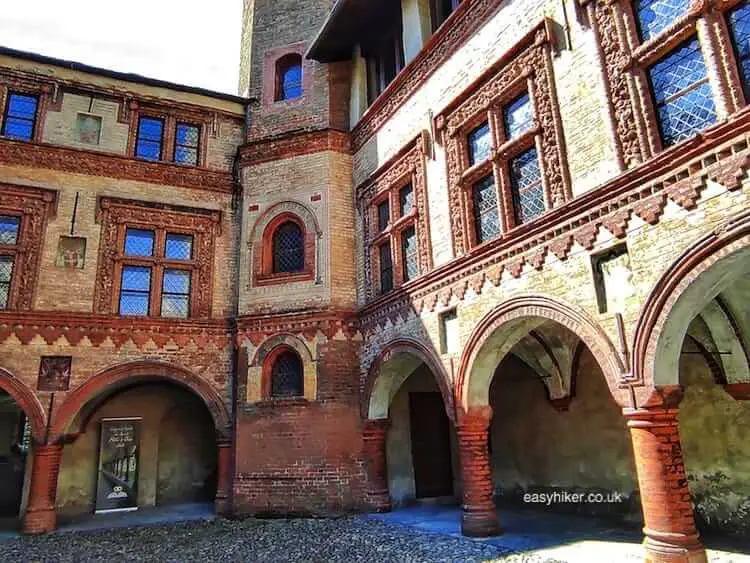
At the end of Via Sant’Orso, turn left into Via Sant’Anselmo (you can spot Porta Praetoria on your right) towards another relic of Roman times, the Arch of Augustus (also undergoing major reconstruction works). Cross the river behind the arch …

… and head for an even more famous Roman landmark of Aosta, the Pont de Pierre from the early 1st century AD, probably built during the reign of the Emperor Augustus.
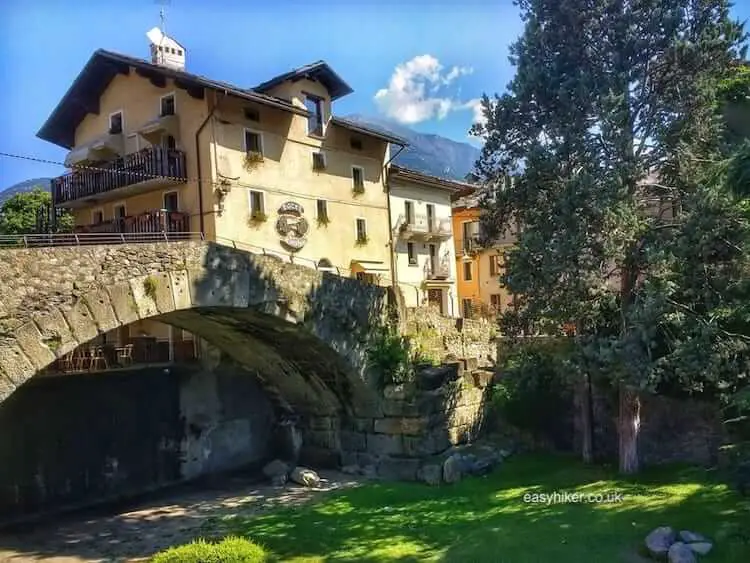
This bridge was built to cross the stream which today is called the Buthier – and which is not a river but a torrent, a relevant distinction here because torrents do not constantly carry water (they are frequently dry during summer) and therefore can more easily change their course once the rains resume (or the snows melt).
Which is what happened here, and the Buthier now flows past the Arch of Augustus (we have just crossed it a few minutes ago). All of this makes the Pont de Pierre a showcase of Roman engineering: proving that it can be more durable than even nature herself.
From the Ponte Romano, make your way back to the town centre. But take your time, stopping for a meal or a drink if you spot a nice place. Aosta may be full of Roman history, but it is equally full of more contemporary charms.



